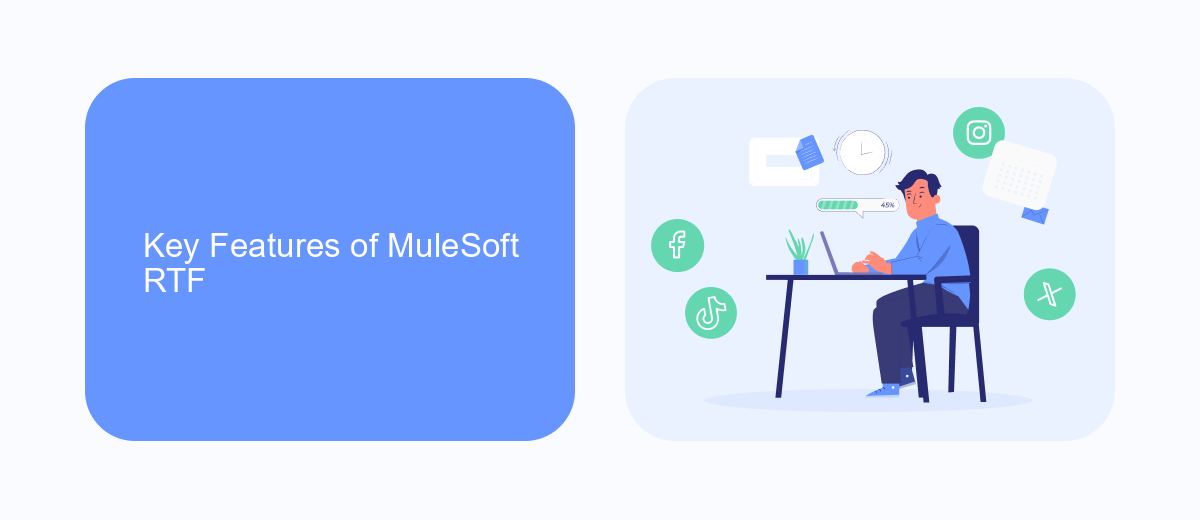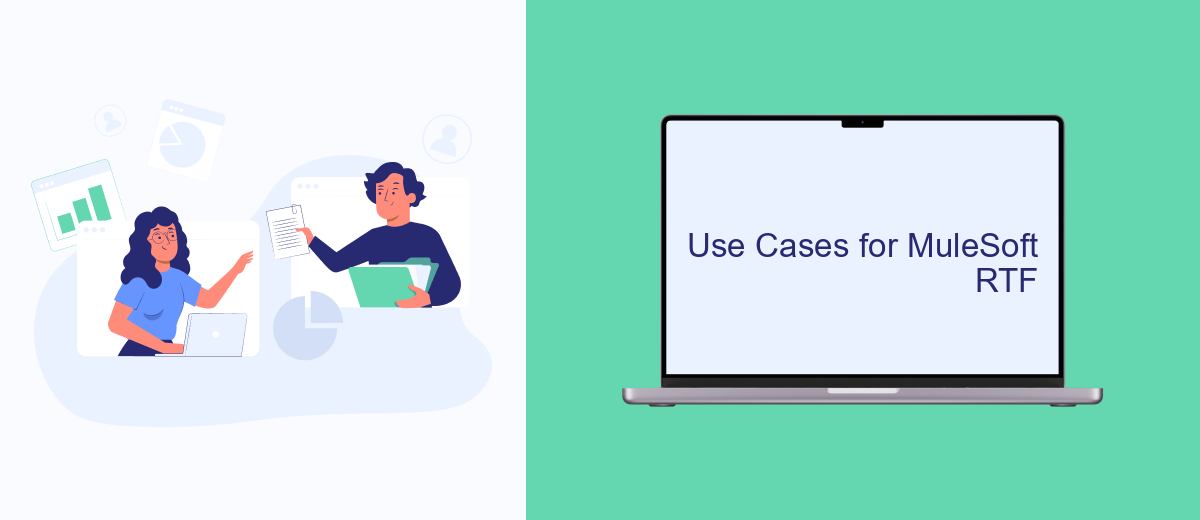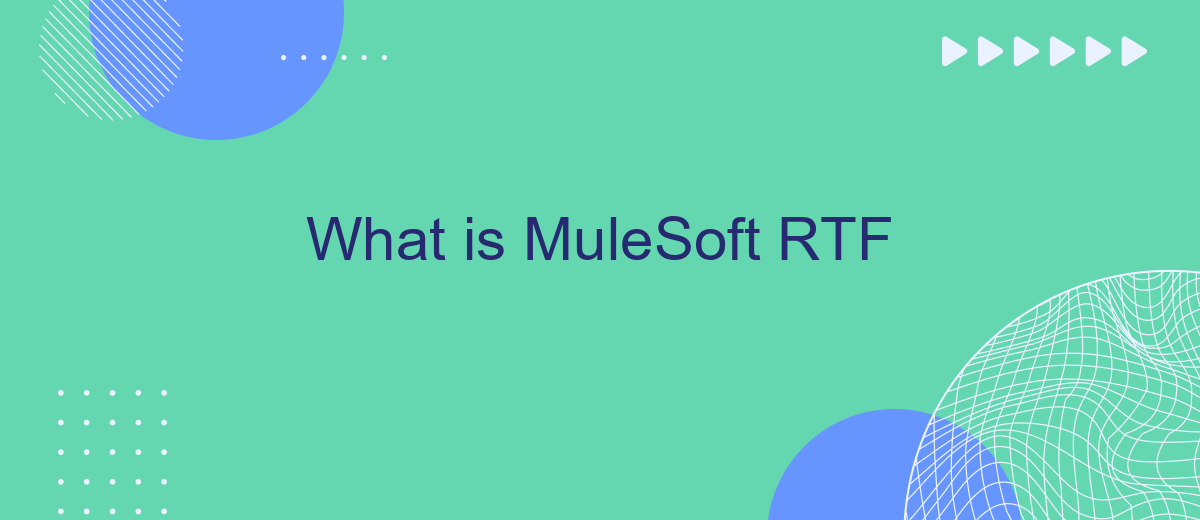MuleSoft Runtime Fabric (RTF) is a container service that allows you to deploy Mule applications across various environments with ease. It provides a scalable and secure infrastructure for running APIs, integrations, and microservices, whether on-premises, in the cloud, or in hybrid setups. This article delves into the key features, benefits, and use cases of MuleSoft RTF.
What is MuleSoft RTF?
MuleSoft Runtime Fabric (RTF) is a container service that enables you to deploy and manage Mule applications across various environments. It provides a flexible, scalable, and secure infrastructure to run your Mule applications on-premises, in the cloud, or in hybrid environments.
- Flexibility: Deploy Mule applications in any environment, including on-premises, cloud, and hybrid setups.
- Scalability: Automatically scale applications based on demand, ensuring optimal performance.
- Security: Maintain high levels of security with built-in features and compliance with industry standards.
- Management: Simplify the management of Mule applications with centralized control and monitoring tools.
By leveraging MuleSoft RTF, organizations can streamline their integration processes and improve operational efficiency. For instance, services like SaveMyLeads can further enhance the integration experience by automating data transfer between various platforms and applications, reducing manual effort and minimizing errors. This combination of MuleSoft RTF and integration services like SaveMyLeads ensures a robust and efficient integration ecosystem.
Key Features of MuleSoft RTF

MuleSoft Runtime Fabric (RTF) is a container service that allows you to deploy and manage Mule applications across various environments, including on-premises, private clouds, and public clouds. One of its key features is the ability to provide a unified runtime plane, which simplifies the deployment and scaling of Mule applications. With RTF, you can easily manage multiple Mule instances and ensure high availability and fault tolerance for your integrations. It supports both horizontal and vertical scaling, allowing your applications to handle increased loads efficiently.
Another significant feature of MuleSoft RTF is its robust security and compliance capabilities. It offers end-to-end encryption, role-based access control, and audit logging to ensure that your integrations are secure and compliant with industry standards. Additionally, RTF integrates seamlessly with various DevOps tools and CI/CD pipelines, enabling automated deployment and monitoring of Mule applications. For businesses looking to streamline their integration processes, services like SaveMyLeads can be beneficial. SaveMyLeads automates the transfer of leads and customer data between different systems, enhancing the overall efficiency and reliability of your integration workflows.
Benefits of Using MuleSoft RTF

MuleSoft Runtime Fabric (RTF) offers a robust solution for deploying and managing Mule applications across various environments. It provides a seamless experience for enterprises looking to streamline their integration processes and enhance operational efficiency.
- Scalability: MuleSoft RTF supports horizontal scaling, allowing businesses to handle increased workloads without compromising performance.
- Flexibility: It enables deployment across multiple environments, including on-premises, private cloud, and public cloud, offering versatile options to meet specific business needs.
- Security: With built-in security features, MuleSoft RTF ensures that data is protected throughout the integration lifecycle.
- Centralized Management: The platform offers a unified console for managing applications, which simplifies monitoring and troubleshooting.
- Enhanced Integration: Services like SaveMyLeads can be integrated with MuleSoft RTF to automate lead processing, further streamlining business operations.
Overall, MuleSoft RTF empowers organizations to achieve greater agility and efficiency in their integration efforts. By leveraging its powerful features, businesses can ensure smoother operations and faster time-to-market for their services and applications.
Use Cases for MuleSoft RTF

MuleSoft Runtime Fabric (RTF) is a versatile solution designed to deploy, manage, and monitor Mule applications across various environments. It provides the flexibility to run applications on-premises, in the cloud, or in hybrid setups, making it a valuable tool for businesses with diverse infrastructure needs.
One of the primary use cases for MuleSoft RTF is in the integration of disparate systems. By leveraging RTF, organizations can seamlessly connect their on-premises systems with cloud-based applications, ensuring smooth data flow and operational efficiency. This is particularly useful for businesses undergoing digital transformation and needing to maintain connectivity between legacy systems and modern applications.
- Hybrid Cloud Deployments: Run applications across both on-premises and cloud environments.
- Microservices Architecture: Deploy and manage microservices efficiently.
- High Availability: Ensure high availability and disaster recovery for critical applications.
- Scalability: Easily scale applications to meet growing business demands.
- Regulatory Compliance: Maintain compliance with industry regulations by controlling where data is processed and stored.
Additionally, services like SaveMyLeads can enhance the capabilities of MuleSoft RTF by automating integrations with various platforms, reducing manual effort and increasing productivity. This combination allows businesses to streamline their operations and focus on strategic initiatives rather than routine integration tasks.
Getting Started with MuleSoft RTF
Getting started with MuleSoft RTF (Runtime Fabric) is a streamlined process designed to help organizations deploy and manage Mule applications across various environments. First, ensure that you have the necessary prerequisites in place, including a MuleSoft Anypoint Platform account and a supported infrastructure, such as Kubernetes or virtual machines. Begin by provisioning Runtime Fabric through the Anypoint Platform, which involves downloading the installer, configuring your environment, and deploying the fabric to your chosen infrastructure.
Once your Runtime Fabric is set up, you can start deploying Mule applications. Create an application in Anypoint Studio, then package it as a deployable archive. Use the Anypoint Platform to deploy the archive to your Runtime Fabric instance. Additionally, integrating with services like SaveMyLeads can enhance your deployment process. SaveMyLeads offers automated integrations that streamline data transfer between MuleSoft and other platforms, ensuring seamless connectivity and efficient workflow. By leveraging these tools, you can optimize your integration processes and maximize the benefits of MuleSoft RTF.


FAQ
What is MuleSoft RTF (Runtime Fabric)?
How does MuleSoft RTF differ from CloudHub?
What are the key benefits of using MuleSoft RTF?
Can MuleSoft RTF be integrated with third-party automation tools?
What are the prerequisites for deploying MuleSoft RTF?
If you use Facebook Lead Ads, then you should know what it means to regularly download CSV files and transfer data to various support services. How many times a day do you check for new leads in your ad account? How often do you transfer data to a CRM system, task manager, email service or Google Sheets? Try using the SaveMyLeads online connector. This is a no-code tool with which anyone can set up integrations for Facebook. Spend just a few minutes and you will receive real-time notifications in the messenger about new leads. Another 5-10 minutes of work in SML, and the data from the FB advertising account will be automatically transferred to the CRM system or Email service. The SaveMyLeads system will do the routine work for you, and you will surely like it.
